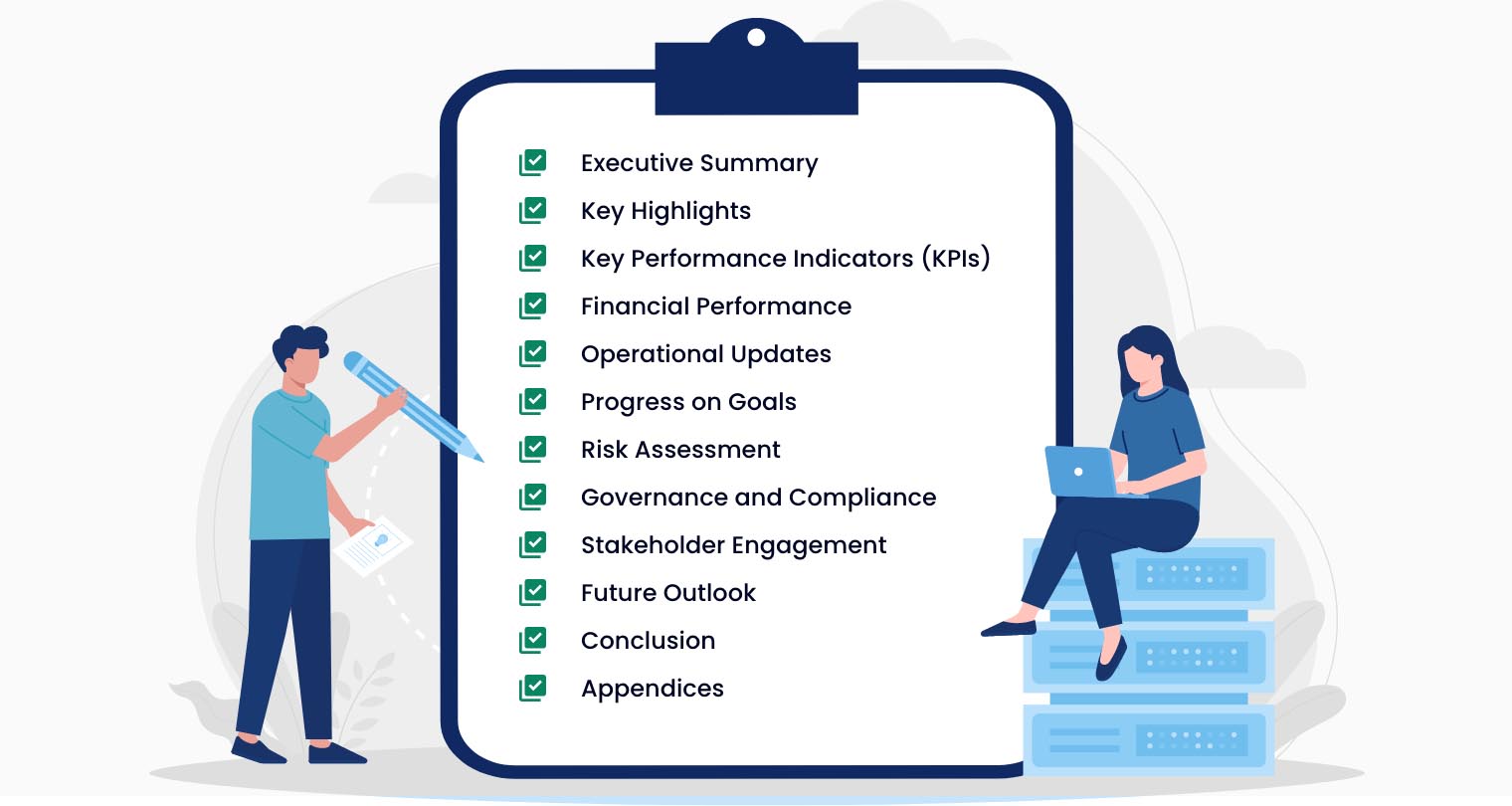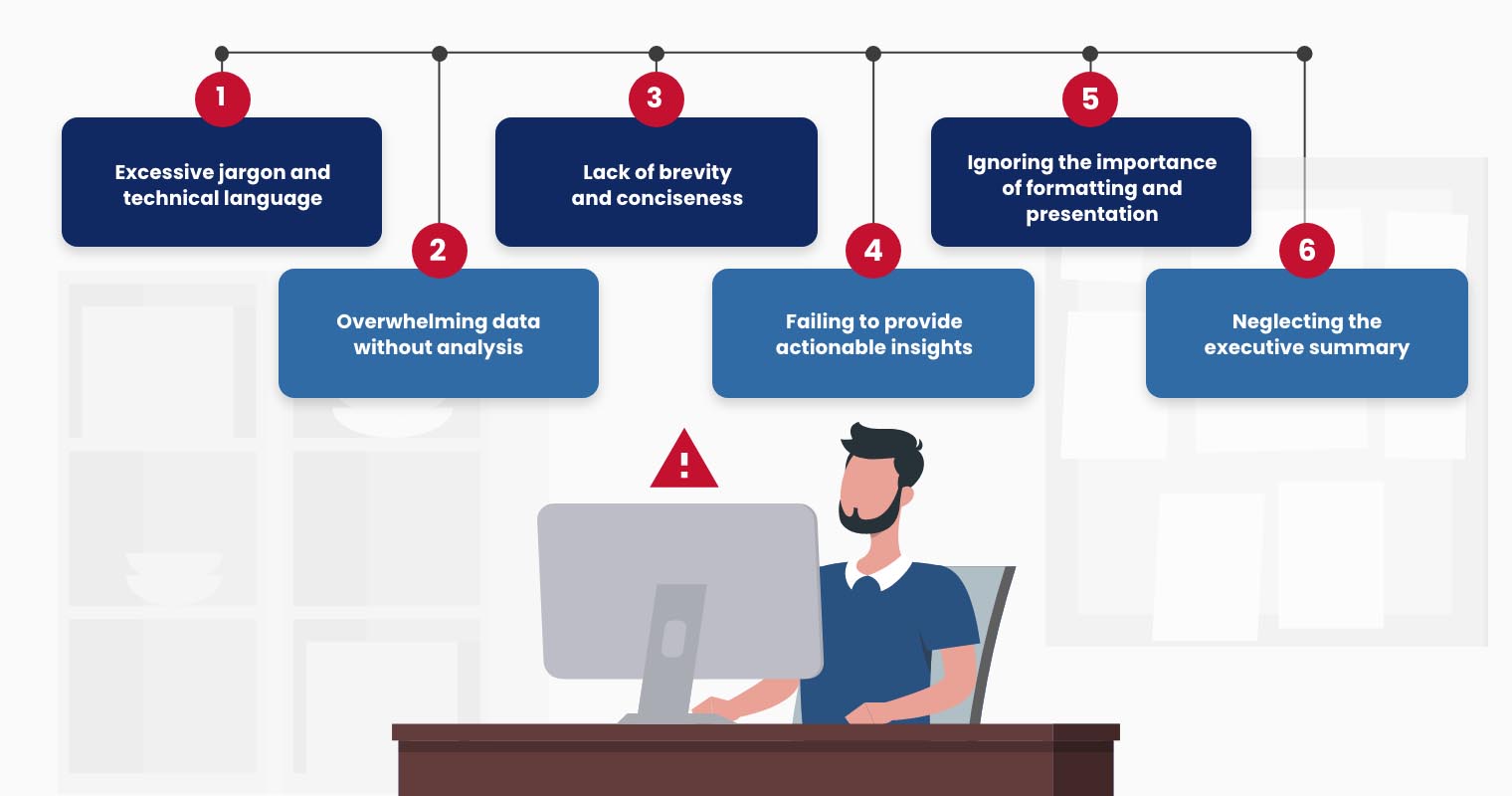In today’s dynamic business landscape, the significance of well-crafted board reports cannot be overstated. It serves as a powerful mechanism for communicating the company’s performance, financial health, and initiatives. They also play a pivotal role in fostering transparency and accountability and facilitating strategic alignment within organizations.
In the next sections, we will explore the intricacies of board reports and how you can create a good one that benefits your company.
What is a board report?

A board report serves as a concise summary of critical business information presented to the board. It provides an overview of the performance, financial status, strategic initiatives, and risks within the organization. Such information makes directors more well-informed. This also enables the board to better fulfill their responsibility and make smarter decisions.
How do board reports relate to board meetings?
Board reports are closely related to board meetings as they serve as a primary communication tool between the management team and the board of directors. They serve as a foundation for discussion, decision-making, and guidance during board meetings, ensuring all members are well-informed.
When is it necessary to prepare board reports?
The frequency of board reporting may vary depending on the organization’s needs and meeting schedules. In most cases, board reports are prepared regularly, such as monthly, quarterly, or annually. Typically, the timing of such reports is also aligned with the frequency of board meetings, giving up-to-date information for discussion and decision-making.
What is the purpose of a board report?
A report to board of directors is a vital instrument for facilitating effective communication and decision-making. But its purpose extends beyond being a mere board document. Read on to better understand its purpose.
- Keep the board updated: Board reports ensure all members are updated about the organization’s performance or committee activities, aligning them with executives and board committees.
- Spark discussions and questions: Reports to the board of directors serve as a catalyst for meaningful debates, encouraging board members to ask important questions, analyze information, and provide insights.
- Foster a sense of accomplishment: Highlighting achievements and progress, board reports create enthusiasm among members, recognizing the collective efforts of the organization’s leadership.
- Lay out concise plans: The report should outline strategic plans, operational objectives, and key initiatives, providing a roadmap for the organization’s future direction and ensuring the board is aware of business operations.
What does good board reporting look like?
Good reporting is imperative for enabling board members to make informed decisions, drive strategic initiatives, and fulfill their governance responsibilities. A report to board of directors possesses specific characteristics that ensure its effectiveness in communicating crucial information. Here are the key characteristics a good board report has:
- Concise and focused — No unnecessary complexity of length explanations, just clear and relevant details.
- Timely and regular — Provides up-to-date information to the board in a timely manner, following a regular schedule.
- Strategic alignment — Connects operational performance to the company’s strategic goals, highlighting how initiatives support the overall vision and mission.
- Visual representation — Includes visual elements such as charts, graphs, and tables for better clarity and understanding.
- Balanced perspective — Provides a balanced view of both successes and challenges of the organization, for realistic assessment.
- Forward-looking — Includes future-oriented analysis and information, allowing the board to anticipate emerging trends, risks, and opportunities.
What you should include in the board report?

When creating a board report, make sure it fits your organization’s specific needs, and that it aligns with your unique goals or priorities. To help you get started on your board report template, here’s a list of sections that you should include:
- Executive Summary
- Key Highlights (Most significant achievements or milestones)
- Key Performance Indicators (KPIs)
- Financial Performance
- Operational Updates
- Progress on Goals
- Risk Assessment
- Governance and Compliance
- Stakeholder Engagement
- Future Outlook (Upcoming priorities, initiatives, or strategic focus areas)
- Conclusion
- Appendices (Additional supporting materials such as detailed financial statements or project reports)
Click below to get our board meeting agenda template for free:
Download Meeting Minutes Template
What are the two types of board reports?
Within board reports, there are two common types that you should know: CEO board reports and HR board reports. These reports offer specific perspectives and focus on distinct areas, allowing the board to obtain a better understanding of the organization, from both strategic and human resources angles.
CEO Board Reports
As its name suggests, this type of report is prepared by the Chief Executive Officer (CEO). Typically, the CEO board reports cover areas such as the company’s financial performance, operational updates, and progress on goals. While the CEO doesn’t necessarily need to write and compile everything, they should be able to create a summary of their plans.
HR Board Reports
These reports focus on human resources-related matters. They aim to give the board insights into talent management, workforce development, employee engagement, and organizational culture. HR board reports typically include metrics on:
- employee retention
- recruitment efforts
- training and development programs
- diversity and inclusion initiatives
- compliance with labor laws and regulations
These reports can help identify potential HR-related risks, and give guidance on talent acquisition and retention.
These two reports provide different perspectives and lenses through which the board can evaluate the organization’s overall performance. That said, the reports should not only be properly structured but also accurate and focused.
Tips on How to Write a Board Report

Many boards struggle to write effective reports, leading to confusion and inefficiency in decision-making. It can be due to the lack of clear structure, missing relevant information, or inadequate presentation. To help you craft a good board report, here are a few tips to follow.
1. Start with a report overview
To provide structure to your board report, begin with a report overview. This serves as a guide for both the report writer and the board members, ensuring that it covers all necessary information. Also, consider including meeting details, agenda, key updates, and any critical information such as competitive analysis or market trends.
2. Create a complete board deck
A board deck basically covers key aspects of the organization’s performance and strategic direction. It ensures that board members have access to all pertinent materials required to evaluate performance, discuss strategic initiatives, and provide guidance to the management team and committees. Here are the essential sections to include:
- Key metrics
- Company updates
- Focus topics
- Financial review
- Executive summary
3. Add the right visuals
To enhance the report’s effectiveness, it is best to incorporate visual elements such as charts, graphs, and other visual aids. These serve as powerful tools to present data and information in a clear and engaging manner.
For instance, a pie chart illustrating the distribution of market share among competitors can quickly convey the organization’s position. Or, you can create a scatter plot illustrating the relationship between marketing expenditure and customer acquisition — guiding board discussions on resource allocation and optimization strategies.
4. Present both positives and negatives
Provide a balanced well-rounded assessment by addressing both the strengths and weaknesses of the company. Be sure to provide updates on KPIs during the meeting for a more transparent and balanced assessment.
Highlight areas of success that the organization can celebrate achievements and build upon. At the same time, identifying areas for improvement fosters a culture of continuous growth and enables the board to address challenges effectively.
5. Use a board portal software
To optimize the board reporting process, it is highly recommended to leverage a board portal software. These advanced platforms provide a range of benefits that improve board communication and collaboration. By using a board portal, you can guarantee:
- Secure communication
- Centralized document management
- Collaboration features
- Time and cost efficiency
- Enhanced accessibility
A well-crafted board report holds significant advantages for both the board and the organization. It empowers informed decision-making and facilitates effective oversight. Follow these tips and create reports that can contribute to the board’s overall success.
Things to Avoid When Writing Your Board Report

Writing a board report is a critical task that requires careful attention and preparation. This is why it’s imperative to be aware of what not to do when creating your report. Here are some mistakes you should watch out for:
- Excessive jargon and technical language: Avoid using excessive jargon or technical terms that may confuse or alienate board members. Opt for clear and straightforward language to ensure easy comprehension and effective communication.
- Overwhelming data without analysis: Present data with meaningful analysis and interpretation, avoiding a data-dump approach that overwhelms board members.
- Lack of brevity and conciseness: Keep the report concise and focused. Avoid unnecessary repetition or lengthy explanations that may detract the board from the main points.
- Failing to provide actionable insights: Simply presenting data without actionable insights or recommendations can diminish the value of your report. Provide clear suggestions based on the information presented.
- Ignoring the importance of formatting and presentation: A poorly formatted or visually unappealing report can hinder readability and engagement. Pay attention to formatting and use clear headings and visuals.
- Neglecting the executive summary: Craft a well-written executive summary that captures the key highlights and takeaways of the report. This allows board members to quickly grasp the main insights and findings.
By avoiding these common mistakes, you can ensure that your report is effective, well-received, and contributes to the board’s decision-making and oversight.
Frequently Asked Questions About Writing a Board Report
In this FAQ section, we will address common queries related to writing a board report and help you enhance its effectiveness.
Q. How often should board reports be prepared?
Reports to the board of directors should be prepared regularly, depending on the organization’s needs and board meeting schedules. It could be monthly, quarterly, or annually. Having a regular report ensures board members are up-to-date with what’s happening in the organization.
Q. What is the role of the board in reviewing a board report?
The board is responsible for carefully analyzing the information presented, from the organization’s performance to the identified strategic issues or risks. They are expected to raise questions or request changes to the report for better clarity and accuracy.
Q. How can I make my board report more engaging?
Presenting information with the right balance of visuals is the best way to make the report more engaging. You can use charts, graphs, and other visual elements to highlight key insights, risks, and opportunities. Make sure to also incorporate some discussion points and questions to prompt active participation from board members.
Q. Are there specific formatting guidelines for a board report?
Formatting guidelines for the board of directors report may vary depending on the organization’s preferences. However, there are some general practices you can consider, such as:
- Clear and consistent structure — Use headings, subheadings, and numbered sections to improve readability.
- Visual presentation — Make sure all incorporated visuals are properly labeled and easily understandable.
- Appendices — If necessary, include appendices to provide supplementary information or supporting data. Appendices should be clearly labeled and referenced in the main body of the report when appropriate.
It’s also best to maintain consistent font styles and sizes and pay attention to grammar, spelling, and punctuation.
How Convene Helps Create a Good Board of Directors Report

Writing a board report requires meticulous data collection, analysis, and presentation, making it a daunting task. Plus, the manual process of gathering information and coordination revisions can be error-prone and time-consuming too. This is why many opt to use board portals to simplify the reporting process.
Convene, one of today’s leading board portals, aims to revolutionize the process of creating reports for the board of directors. Its secure, centralized platform is designed for optimum collaboration, document management, and version control.
With customizable templates and drag-and-drop functionality, creating your board reports will be a breeze. Convene’s real-time document sharing and annotation capabilities even make report revisions easier and faster!
Discover more about Convene and its features. Book a free demo today!
Jielynne is a Content Marketing Writer at Convene. With over six years of professional writing experience, she has worked with several SEO and digital marketing agencies, both local and international. She strives in crafting clear marketing copies and creative content for various platforms of Convene, such as the website and social media. Jielynne displays a decided lack of knowledge about football and calculus, but proudly aces in literary arts and corporate governance.


![How to Create a Board Skill Matrix + Template [Free Download]](https://cdn.azeusconvene.com/wp-content/uploads/2024Q3_Jul_Board-of-Directors-Skills-Matrix-Whitepaper-C-Dark.png)








